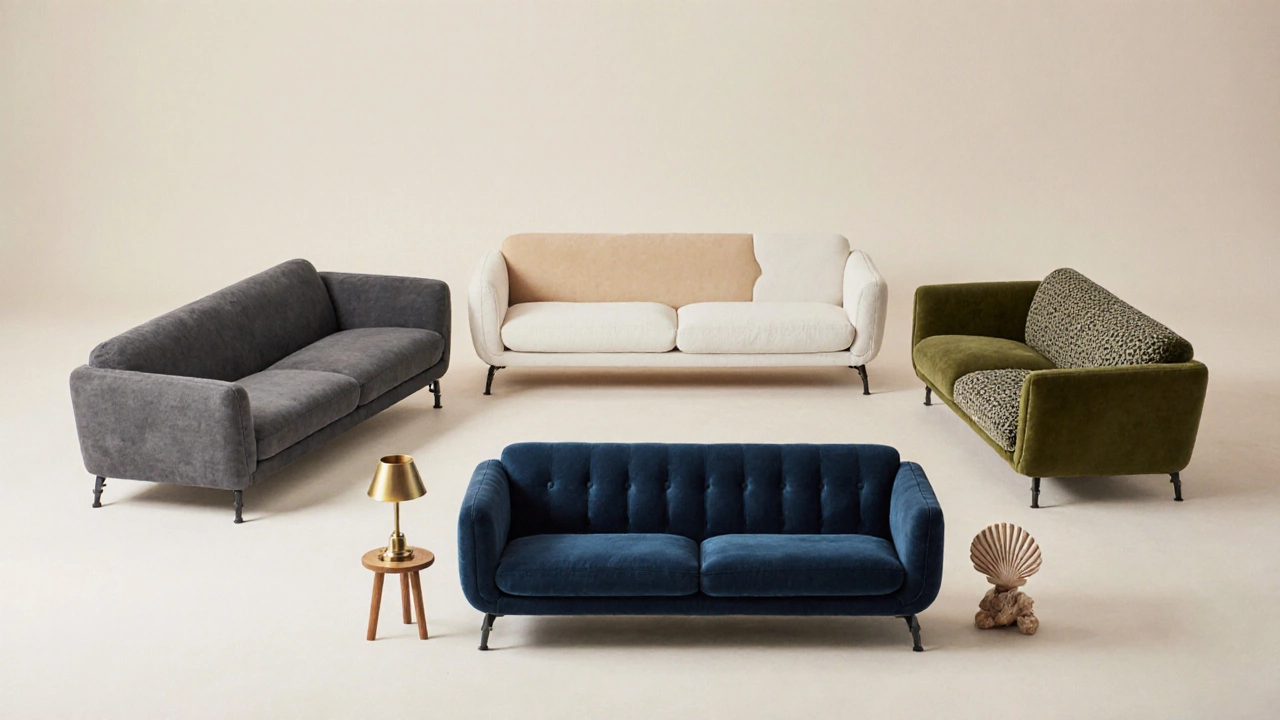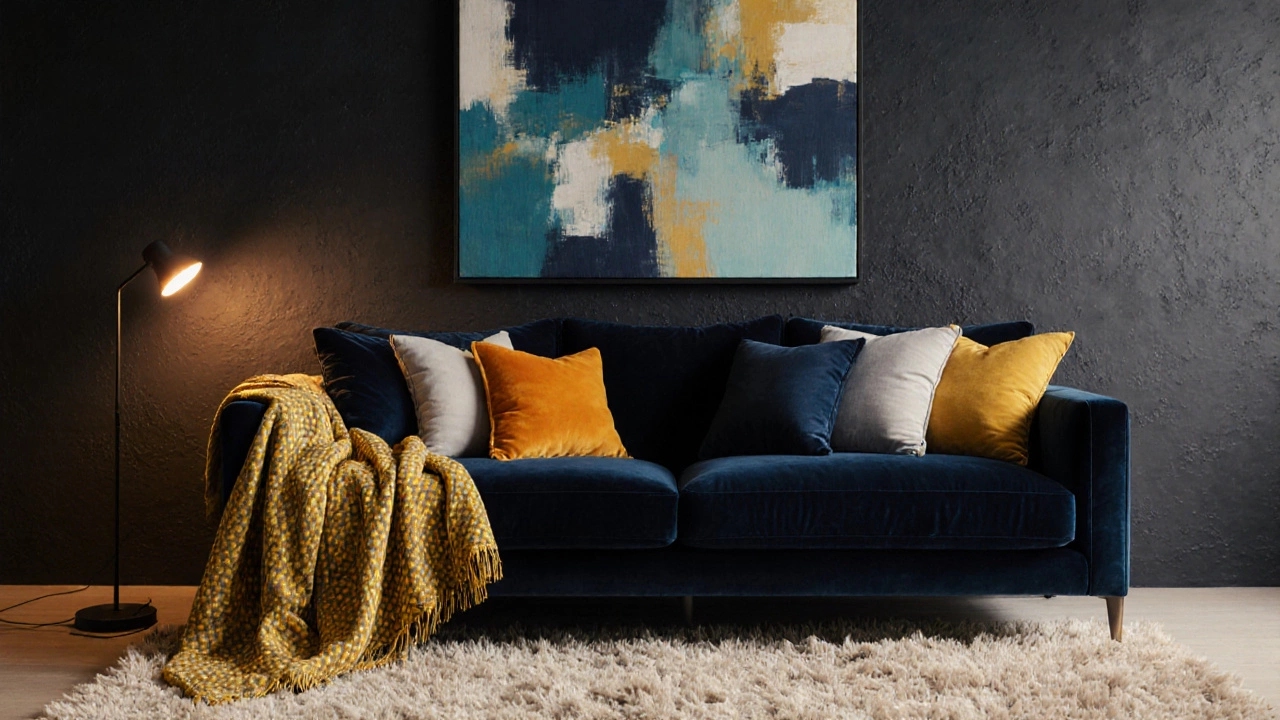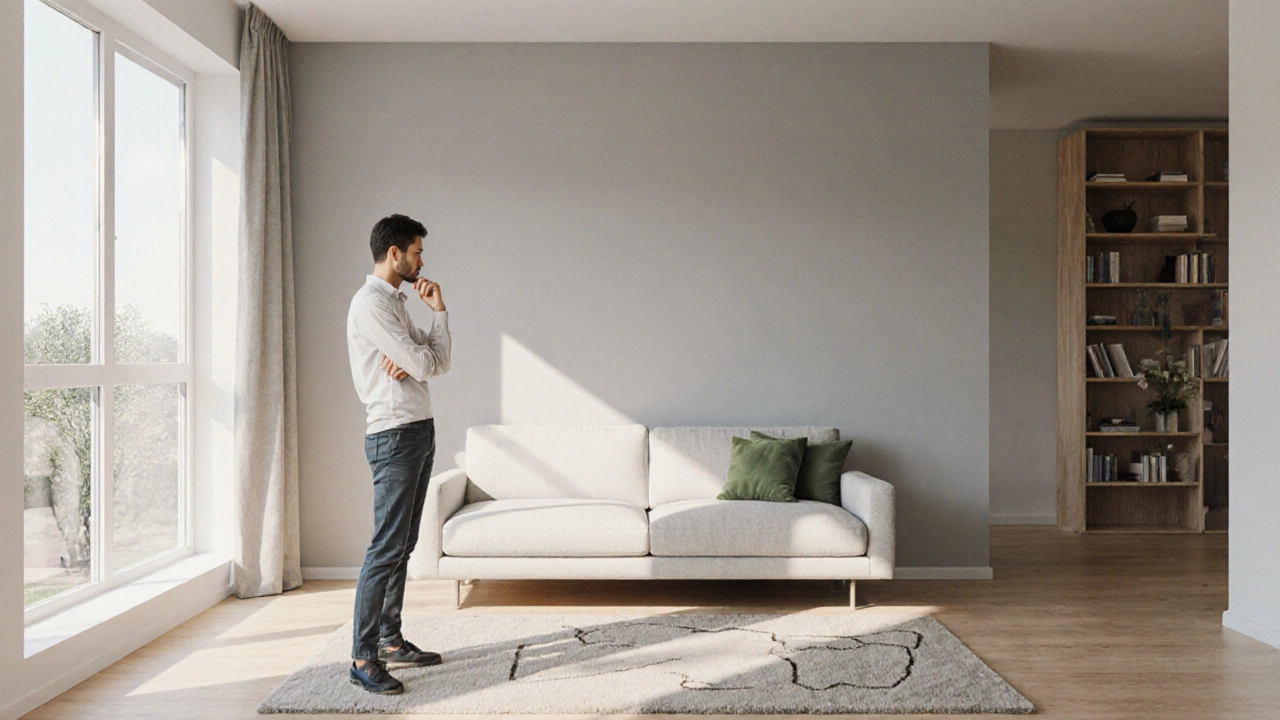Sofa Color Selector
Which neutral sofa color works best for your space?
Answer a few quick questions about your room's characteristics and lifestyle to find your ideal couch color.
Your Ideal Sofa Color
Why This Color Works
Grey
Best for modern spaces and high traffic. Hides wear well and pairs with industrial or contemporary decor.
Beige
Warm and inviting for traditional or Scandinavian styles. Best with natural light and low traffic.
White
Perfect for minimalist and coastal spaces. Requires maintenance but creates airy, bright rooms.
Navy
Adds subtle drama while hiding spills. Works with classic and retro decor styles.
Olive
Earthy tone that pairs perfectly with wood and brass accents. Ideal for boho and mid-century styles.
Staring at a blank wall, wondering which couch will blend with every rug, lamp, and throw you own? You’re not alone. The good news is you don’t need a crystal ball-just a few timeless hues that play well with any style.
Why a "goes-with-everything" couch matters
Choosing a color that can survive trends saves you money and stress. A versatile couch lets you swap accessories seasonally without looking dated. It also makes it easier to rent a space or sell a home later on-buyers gravitate toward neutrals that feel move‑in ready.
Neutral sofa colors are the safe bet
Neutral tones sit in the middle of the color wheel, so they don’t clash with bold accents or muted palettes. Think of them as the canvas that lets your décor shine. Below are the top five neutrals that consistently prove their adaptability.
The five universal couch colors and when they shine
- Grey a cool, modern hue that works from industrial lofts to cozy cabins
- Beige warm and inviting, perfect for traditional and Scandinavian looks
- White bright and airy, ideal for minimalist and coastal vibes
- Navy deep enough to act as a neutral while adding subtle drama
- Olive earthy green that pairs well with wood tones and brass accents
Quick comparison of universal couch colors
| Color | Style Compatibility | Stain Resistance | Price Range (U.K.) | Typical Upholstery |
|---|---|---|---|---|
| Grey | Modern, Industrial, Contemporary | High (especially in micro‑fiber) | £800‑£2500 | Fabric, Leather |
| Beige | Traditional, Scandinavian, Rustic | Medium (prone to light stains) | £750‑£2300 | Fabric, Linen blend |
| White | Minimalist, Coastal, Nordic | Low (requires protective covers) | £900‑£2600 | Leather, High‑grade polyester |
| Navy | Classic, Transitional, Retro | High (dark hides spills) | £850‑£2400 | Fabric, Velvet |
| Olive | Boho, Mid‑Century Modern, Earthy | Medium‑High | £800‑£2350 | Fabric, Tweed |

How to pick the right universal color for your space
- Assess your wall color. Light walls (off‑white, pale grey) let darker neutrals like navy or charcoal anchor the room. Dark walls benefit from lighter tones such as beige or white to keep the space open.
- Consider lighting. Natural light makes grey appear softer; artificial warm lighting can turn beige into a mellow caramel.
- Think about traffic. High‑traffic families often choose grey or navy because they conceal wear better than beige or white.
- Match your lifestyle. If you have pets, a leather finish in grey or charcoal is easier to wipe clean than a light‑colored fabric.
- Test swatches. Purchase a small upholstery sample and place it against your floor, wall, and existing décor for at least 24 hours before ordering.
Fabric vs. leather: does material affect the “go‑with‑everything” factor?
Both material types can be neutral, but each brings its own pros and cons.
- Leather. In shades like Charcoal deep gray leather ages beautifully, it offers high durability and a sleek look that pairs with metal, wood, or glass. The downside: it can feel cold in winter unless you add throws.
- Fabric. Mid‑tone greys, beiges, and olives in Tweed adds texture while staying neutral are softer and can hide minor stains. However, they need regular vacuuming and occasional professional cleaning.
Styling tips: make a neutral couch pop without losing its versatility
Neutral doesn’t mean boring. Simple accessories can inject personality while keeping the base couch universally compatible.
- Layered throws. A patterned throw in a complementary hue (e.g., mustard on a grey couch) adds color without permanent commitment.
- Cushion mix‑and‑match. Use a 60‑30‑10 rule: 60% neutral cushions, 30% muted accent, 10% bold accent. This formula works for beige, white, or olive sofas alike.
- Artwork and lighting. A large abstract piece with hints of your couch’s undertone ties the room together effortlessly.

Common pitfalls and how to avoid them
Even the most adaptable colors can become a mistake if you overlook a few details.
- Ignoring undertones. A beige with pink undertones may clash with cool‑toned kitchens. Choose a beige described as “warm sand” rather than “rose‑tinged.”
- Over‑matching. If every piece in the room is the same shade, the space feels flat. Balance neutrals with texture and varied materials.
- Skipping care instructions. Some fabrics labeled “grey” fade quickly under sunlight. Look for UV‑resistant finishes or place the couch away from direct sun.
Key takeaways
- Grey, beige, white, navy, and olive are the five most flexible couch colors in 2025.
- Match the hue to wall color, lighting, traffic, and lifestyle for best results.
- Both leather and fabric can be neutral; choose based on durability and comfort preferences.
- Use throws, cushions, and art to add personality without sacrificing versatility.
- Pay attention to undertones and care requirements to keep your couch looking fresh.
Frequently Asked Questions
Can a white couch stay looking clean in a family home?
Yes, if you choose a high‑grade leather or a performance‑grade fabric that resists stains, and use slipcovers or cushions that can be laundered regularly.
Is navy really a neutral?
Navy works as a neutral because its deep tone hides dirt and pairs with both warm woods and cool metals, making it a subtle backdrop for many décor styles.
Should I buy a couch with a fabric that matches my wall?
It’s better to contrast slightly. A couch a shade lighter or darker than the wall creates depth and prevents the room from feeling flat.
How often should I rotate cushions on a neutral sofa?
Every three to four months. Rotating cushions evens out wear and keeps the overall look fresh.
Are there eco‑friendly options for neutral couches?
Look for sofas made with FSC‑certified wood frames, organic cotton or linen fabrics, and low‑VOC finishes. Brands like EcoLiving offer grey and beige models that tick those boxes.
Armed with these color basics, you can pick a couch that feels right today and stays stylish tomorrow-no risky experiments needed.
